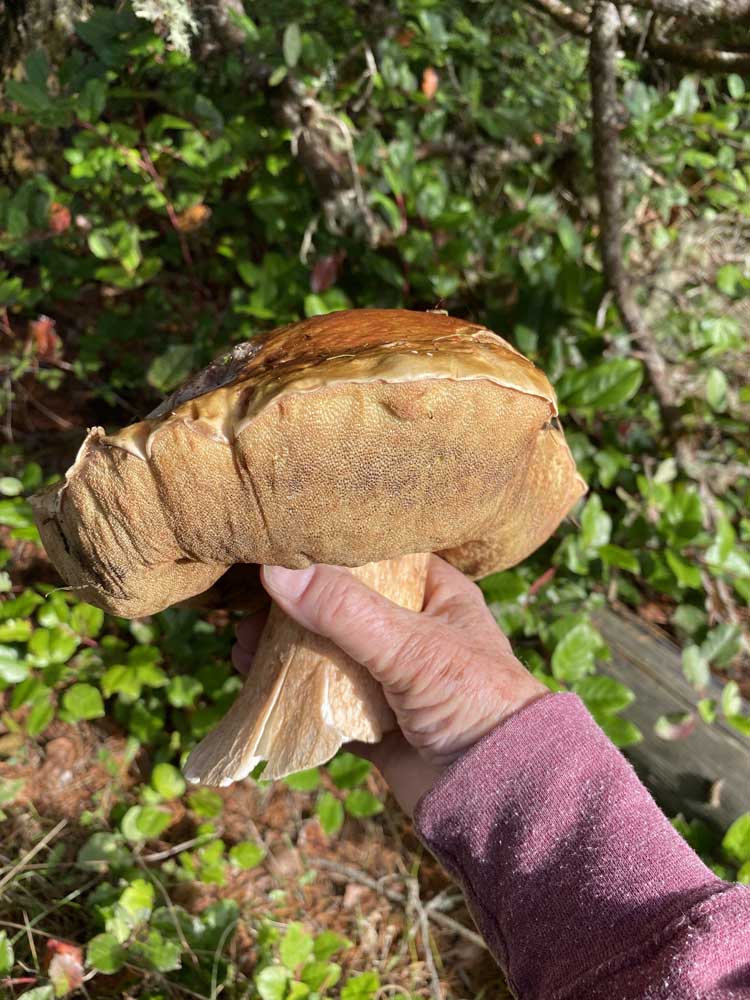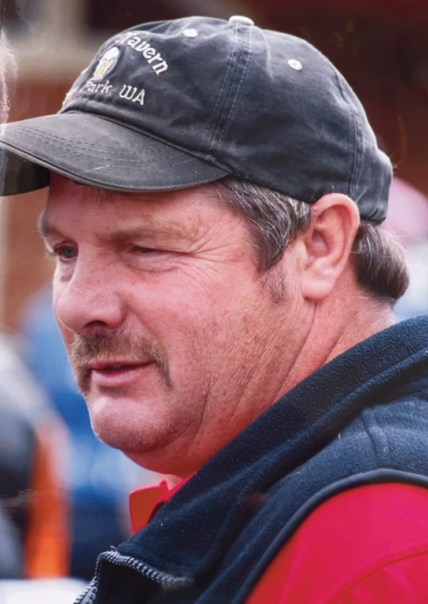Coast Chronicles: The winter garden and a note from Iran
Published 11:37 am Monday, October 31, 2022

- One of the rewards of our wetter weather is that the ‘shrooms have finally arrived: a big King Bolete.
Has there ever been such an abrupt changeover from fall to winter? I don’t remember one. Those Indian summer days evaporated like rain drops on a hot griddle: one day I was in a short-sleeved T-shirt giving the lawn a last mow, and the next day — cold, wet, foggy and gray — I was cocooning by the fire.
Now all the small creatures are preparing for winter. The chipmunks are climbing up, down, and all around on the rose arbor eating and gathering tiny rose hips; while the gray squirrels are doing circus maneuvers in the tops of the chestnut trees. (There are miniature round prickly bathysphere-like chestnut husks on the ground everywhere.) They’ve got a bumper crop of chestnuts this year, fortunately, as people in the know are saying it may be a long cold winter. Yesterday a two-point buck was nibbling on the last of the Asian pears. And the female orb spiders have mated, set their eggs somewhere, taken down their beautiful webs, and given up their tiny souls.
Trending
Today I got out my winter gear, raincoat and boots, and started the regime of getting outside to walk despite the weather. I was rewarded by finding a lovely large King Boletus and lots of tiny charming (though inedible) ‘shrooms under the dripping beach pines. I guess it’s time to slow down and — now that we’ve passed Halloween — start thinking about Thanksgiving. Where will you be? Who do you want sitting around your table? And what are you thankful for in this year that’s just passing?
Winter garden
So, yes, winter is upon us, and there are some winter-prep activities to be undertaken in the garden. But, first of all, there are some things not to do. Remember when it was “No-mow May”? Well, several online garden sites are now saying it’s “No-rake winter.” Not over-tending the garden is right up my alley. Birds and mammals are using the remnants of our yards to get ready for winter. Many perennial seed heads, even on what some might consider pesky weeds, are providing fodder for the birds and other creature during these bleak months. Right now, less is more.
Here’s another thing not to do: don’t rake up and toss those leaves. My long-time gardening friend, Sojourner Smith, always said, “Every tree deserves its own leaves.” Not only do those leaves break down and return nutrients to the soil, but leaf and detritus piles provide over-wintering habitat for bees and other insects. Some pollinators even lay their eggs in hollow stems in untended corners of your yard. And if you do have a large-leaf maple or other tree producing a goodly amount of leaves, rake these into piles to cover your garden beds. Decomposing leaves provide insulation with a natural mulch that can help protect plants from the chill of winter. (And this mulch is free!) One site even recommends covering perennials with evergreen boughs to protect them from freezing temps and rough winter winds.
In terms of things to do, here are a few suggestions: be sure to pull out any annuals or perennials that have finished their season of production. Some greens can last through a frost or two — spinach and kale to name a couple. But others if left in the ground can become prone to disease. If you’ve sorted and thinned bulbs, be sure to store them in places that won’t promote mold, though they should be kept adequately moist. It might not even be too late to do some pruning — I’ve got some tangly hydrangea that need attention — before our first windy winter storm.
This is also a time to check your tools: steel wool will remove rust; then sharpen and oil any that need attention; clean and organize that tool shed. And, if you’re one of those who like to spend winter months dreaming, now’s the time to pour over catalogues and plan for the next season.
Coffee puzzle
And finally — I left you last week with a coffee question: which has more caffeine: drip coffee or espresso? I know many of you will be as surprised as I was to find out that it’s drip coffee. As coffee meister Al Hendrix says, “Espresso coffee beans are roasted longer, hotter and darker — commercial companies want them black, drier, and powdery. And the longer you roast a bean, the less caffeine it has. If you really want to get the biggest caffeine boost, you want a lightly-roasted coffee.” So there you have it — another myth busted.
Trending
• • •
Don’t forget to vote! Drop off your ballot at any post office or drop box. Reminder: there is one in the parking lot of the Senior Activities Center in Klipsan.









